Menu
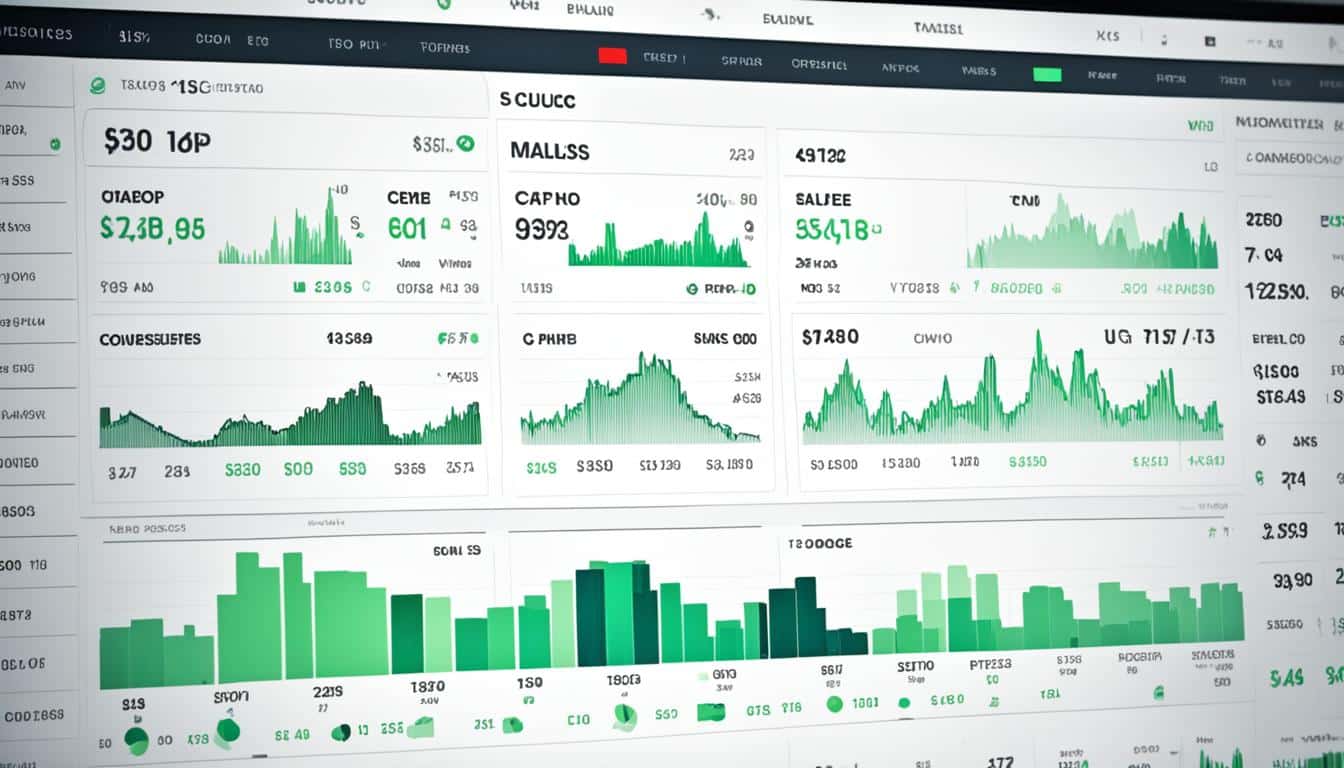
Did you know that more than 10,000 groups worldwide rely on real-time commodity prices? They use these prices to guide their investments. To understand commodities like WTI Crude Oil, Brent, Gold, and Corn, they need exact and current prices. This is crucial because the market can change fast due to various reasons like world events, changes in rules, or politics. Investors need to be spot on with their data.
An app that includes commodities from places like NYMEX, CBOT, and others has a great 4.7 out of 5 rating. It’s based on 2.85K reviews. But, people have had problems with the app’s performance since early 2021. The last update was back on January 8, 2024. So, users are advised to give feedback to the developers at despdevs@gmail.com. This will help in fixing any issues.
Fusion Media says it is vital to have real-time commodity prices. They suggest checking with more than one source. This helps avoid making bad trades. It doesn’t matter if you’re trading energy, metals, grains, animals, or soft commodities. Making sure your data is correct and true is key for success.
Keeping an eye on live commodity data is key for wise investment choices. Different commodities, from gold to crops, act in varied ways in the market. So, it’s vital to follow the real-time trends. This helps investors and traders spot good chances and protect themselves from losses.
America’s commodity market dates back to colonial times. It’s led by big names like ICE Futures U.S., the Chicago Board of Trade, CME, and NYMEX. The 1936 Commodity Exchange Act set up rules for trading and regulating these goods. This includes defining what a commodity is, how it’s traded, and ensuring it’s done fairly.
Some commodities, like gold, protect against inflation. Others, like grains, metals, and energy, spread risk in your investments. Staying on top of live market information is crucial. It helps see opportunities and change strategies when prices shift. This can happen because of weather, politics, or how the market is doing in general.
The commodity market is made up of different types of assets. Each one is affected by its own special factors. Here are the main categories:
Commodity trading happens through futures contracts. These are deals to buy or sell at a set price in the future. It’s crucial to know about futures and spot prices if you’re trading commodities. These prices are shaped by those betting on market changes and those trying to avoid risk. Staying up to date with live commodity data is essential for anyone in this market. The Commodity Futures Trading Commission makes sure things are done fairly. It aims to stop market fixing while helping prices get set in a fair way.
In short, the changing nature of the commodity market means you must stay updated. This is key to making smart investment moves.
The commodity market is complex but fascinating. It involves many aspects that interact in interesting ways. Traders who understand these connections can make smart choices quickly.
The market involves producers, buyers, contracts, and specific trading places. Each part is crucial for the market to work well. Lots of things impact the market, like supply, demand, the world economy, and politics. Around 36% of the Consumer Price Index is made up of commodities. This shows how important they are for the economy.

| Element | Description | Recent Trends (by February 2024) |
|---|---|---|
| Commodity Prices | Fluctuations due to supply-demand imbalances | A minimal increase of 0.3% in 12 months |
| Food Costs | Included in CPI, over 13% | 2.2% higher |
| Energy Costs | Approximately 7% of CPI | Variable trends |
| Gold Prices | Significant fluctuation within one year | Peaked at $2,200/ounce in March 2024 |
In this market, supply, demand, and several other factors are at play. Traders buy and sell in the spot market or use futures and options. Exchanges like ICE Futures U.S., CME Group, and NYMEX make sure trading is fair and meets certain standards.
Prices of commodities change for many reasons. Economic issues, natural disasters, and how investors feel all matter. Prices went up by 12.1% in 2021 and 4.8% in 2022. But, between February 2023 and February 2024, they only rose by 0.3% because supply got better.
Many see commodities as a good way to protect their investments. Experts think up to 10% of an investment portfolio should be in commodities. There are two main kinds of traders: hedgers who use futures to protect themselves, and speculators who try to make money from price changes. Knowing about these traders helps others understand the market better.
In the world of commodities, getting the right price data is key. Use many trusted sources for a solid understanding of the prices. This helps make strong decisions.
Getting commodity price data from top providers is vital. MarketView lets you tap into over 500 sources, including big names like CME Group, Platts, Argus, and OPIS.
Every source has something special. ICIS looks at 143 global markets, making it great for lowering risks and spotting chances. ICE is key for futures trading data worldwide. When it comes to the U.S. market, analysts find EIA and NASDAQ very useful, as they provide lots of energy statistics and equity data.
| Data Source | Specialty | Coverage |
|---|---|---|
| ICIS | Global Commodity Data | 143 Markets |
| ICE | Futures Trading Information | International |
| EIA | U.S. Energy Statistics | Domestic |
| NASDAQ | Equity and Index Markets | Technology Sector |
Talking to many sources and checking their data often is vital. This ensures the price info used for business and investments is correct and up-to-date.
Tracking commodity prices in the market is key for good trading decisions. With advanced tech, traders always have up-to-the-minute prices. This helps them act quickly when the market changes.
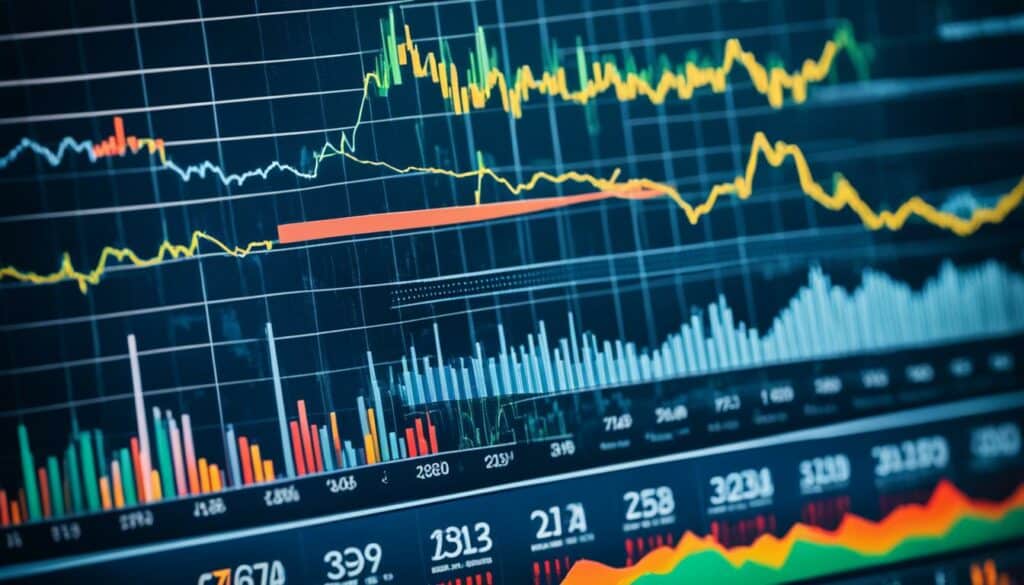
Generative AI platforms help traders analyse big data. They use complex maths to set the best prices for profit. With AI, trading becomes more automated and efficient. This means traders save time and have smoother processes.
One major plus of this tech is fast access to real-time prices. Real-time systems keep the data fresh and correct. Traders get smart alerts that help them react fast to the market. This is super useful in fast-moving markets.
These systems also send custom newsletters to team members. It keeps everyone updated with the latest price news. Teams like the Data Science Team and Market Risk Team benefit a lot. They can use this info to make smart choices.
Real-time prices and updates are checked by special systems. They make sure the data is right and true. Thanks to affordable sensors and the internet, real-time info is available more than ever. This change has really affected how people trade commodities.
| Benefits | Technological Solutions |
|---|---|
| Accelerated Access to Information | Real-time monitoring systems, sensors |
| Intelligent Alerts and Feedback | Generative AI-driven platforms |
| Personalised Newsletters | Customised communication systems |
| Optimised Pricing | Advanced mathematical pricing engines |
In conclusion, tech has changed how traders deal with commodity prices. Real-time information and market updates are now in their hands. As AI and tech improve, trading will only get better, faster, and more profitable.
Getting real-time commodity prices is great for traders and investors. It helps them react quickly to changes in the market. This skill is key for spotting trends early and avoiding big losses when the market is shaky.
From 1970 to 2015, the returns on the Bloomberg Commodity Index didn’t move much like U.S. stock values did. This shows updating your strategy with fresh data is very important.
A reliable commodities price tracker helps investors make smarter choices. For example, history tells us that when inflation speeds up, commodity prices often go up too. This can protect diversified investments against inflation.
By watching real-time commodity prices, you can guess where the market is going. This helps you place your bets wisely, which can make your investments more stable.
Knowing the latest info lets traders react fast to big events like bad weather or political issues. These events often affect commodity prices more than stock and bond prices. In 2008/2009, for example, when demand went down across the board, this connection got stronger for a while.
But, real-time data helped traders make quick changes, softening the hit on their trading plans. Today, thanks to the internet, companies can gather and analyse data faster. This speeds up many parts of their work, like spotting problems in the supply chain or changes in how products are selling. It also helps them keep an eye on the market trends.
Using tools like AI in every step of trading boosts a company’s ability to bounce back from shocks. It can make the difference between barely doing okay and really succeeding in today’s fast-changing markets. So, having a good commodities price tracker is vital for doing well in finance now.
Following real-time commodity prices is key for getting ahead in the market. However, it’s full of hurdles. It’s hard to keep data accurate when the market changes fast. Energy and food prices often jump or drop without warning. Moreover, these changes affect over 20% of the Consumer Price Index. So, keeping up with *commodity market updates* and having *live commodity data* is crucial for those in the market.
Getting real-time data right is a big challenge. For example, the U.S. Bureau of Labor Statistics found only a 0.3% increase in commodity prices over a year by February 2024. This was much lower than before. With unexpected events happening and shaking the market several times a year, trusting data is tricky. Making sure data is correct helps in making smart decisions. This is vital as prices of commodities like crude oil and gold can change a lot.
The market’s volatility adds to the challenge. Crude oil prices, for instance, went from over $120/barrel to under $70/barrel after the Russia-Ukraine issue and then back. This means quick thinking and adaptability are a must. Although commodity prices have stayed relatively steady since October 2023, disruptions could change this. Metal prices, for example, have shot up since 2020. So, understanding *commodity market updates* and having *live commodity data* is crucial for dealing with these changes.
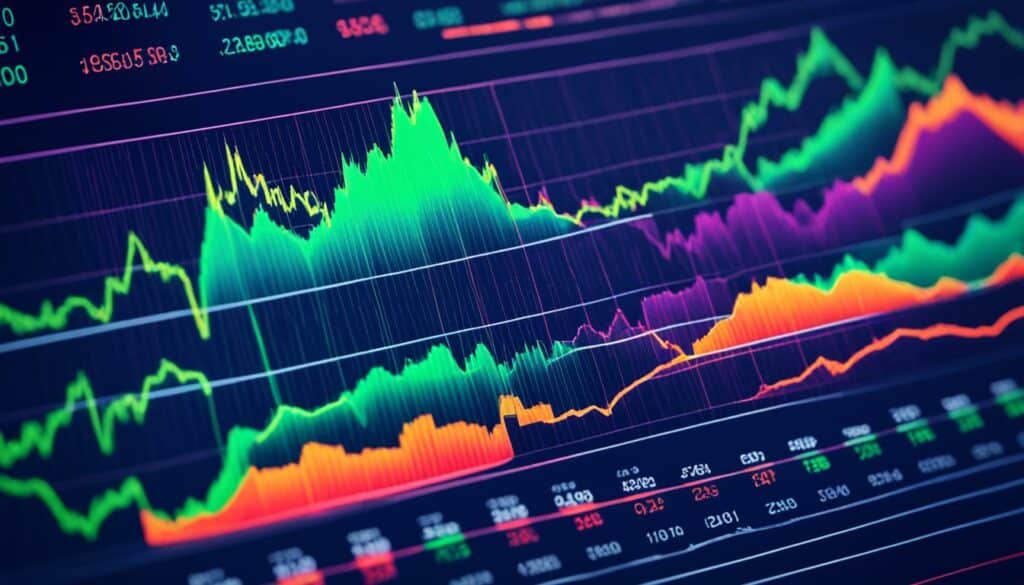
Dealing with these issues needs modern tools and tech. Traders and investors rely on advanced platforms and real-time analytics. This gives them the ability to respond fast to market shifts. By using the right data and strategies, risks can be lowered, and chances better captured.
In today’s busy trading world, good commodity price analysis tools are a must. They give traders an advantage by showing them real-time commodity prices and detailed commodity price analysis.
Great analysis tools have many features to meet traders’ different needs. Some of these are:
There are several key platforms for commodity price analysis. Each one has its own strengths and helps with specific market goals. Let’s take a look at the leading options:
| Platform | Key Features |
|---|---|
| MarketView | Collects data from over 500 sources and has ExcelTools for analyses. |
| CME Group | Gathers futures and options data from many exchanges. |
| Platts | Offers a wide range of market data for deep analysis. |
| Argus | Focuses on the energy sector, including oil, gas, electricity, and renewables. |
| OPIS | Provides detailed pricing and news for oil, gas, and related products. |
These tools and insights are vital, giving traders the confidence to deal with the challenges of real-time commodity prices. Also, platforms like ICIS, Trading Economics, and Vesper add even more data and analysis options.
Platforms with advanced analytics and detailed data are key for anyone trading commodities. With these, traders make decisions based on the latest and most accurate market info. This way, they stay informed and ahead in the market.
Knowing why commodity prices change is key. They change a lot because of money matters, new rules, and politics. Quick market info shows us this.

In 2021, the world economy’s growth hit 5.5%. This made people want more commodities, so prices went up. Energy goods got imported more, making an extra $93.3 billion from 2020 to 2021.
Also, the unit value of refined copper went up 53.1% during that time. All this shows how the economy affects commodity prices.
When trade rules change, it affects commodity prices a lot. For example, U.S. exports of commodities passed $166.7 billion from 2020 to 2021. This shows how important new policies are in the market. Quick market news helps understand these changes. It’s crucial for making good decisions in complex markets.
Politics also heavily influence commodity prices. Big political risks make the market prices jump. The World Bank reported a big 82% rise in energy prices in 2021 compared to the year before. This is a clear sign that political problems make the market hard to predict. Staying updated on commodity prices helps investors avoid the risks linked to politics.
| Commodity Sector | 2020 Imports (Billion $) | 2021 Imports (Billion $) | Percentage Increase |
|---|---|---|---|
| Agricultural Products | $163.4 | $193.8 | 18.6% |
| Energy-related Products | $126.0 | $219.3 | 74.1% |
| All Commodity Sectors | $914.6 | $1,251.6 | 36.8% |
To sum up, understanding how financial, regulatory, and political factors affect commodity prices is important. With the right market info, we can better deal with these challenges.
Getting up-to-date commodity data is key for traders who need it for their work. It’s vital to pick services with great features and easy-to-use interfaces.
This app brings real-time quotes for lots of goods, like energy and metals. It shows important details like ask, bid, and more. Plus, it has charts that go back up to six months.
The commodities it covers include:
This platform is connected to several big trading groups, offering a one-stop shop for trading needs. Users like its features and the fresh news it shares about commodities.
The app stands out with its personalised alerts. It quickly tells users about any price changes, which is very helpful for those who trade a lot. This is a must-have for anyone serious about trading.
| Feature | Description |
|---|---|
| Real-Time Quotes | Get live prices for energy, metals, and more. |
| Detailed Information | Find detailed data and charts going back six months. |
| Diverse Commodities | It covers a wide range of goods and exchanges for all traders. |
| High User Rating | Users love it, with a strong rating of 4.7 out of 5. |
| Custom Alerts | It offers personalised alerts for staying on top of the market. |
The app keeps getting better thanks to feedback from its users. The most recent update, on 8th Jan 2024, fixed bugs and improved how it works. Users are invited to share their ideas to help make the app even better.
Using up-to-the-minute commodity prices in investment plans is key to making the most money while avoiding risks. Today’s advanced models for commodity prices show big progress. They help in doing a strong commodity price analysis, crucial for making good investment strategies.
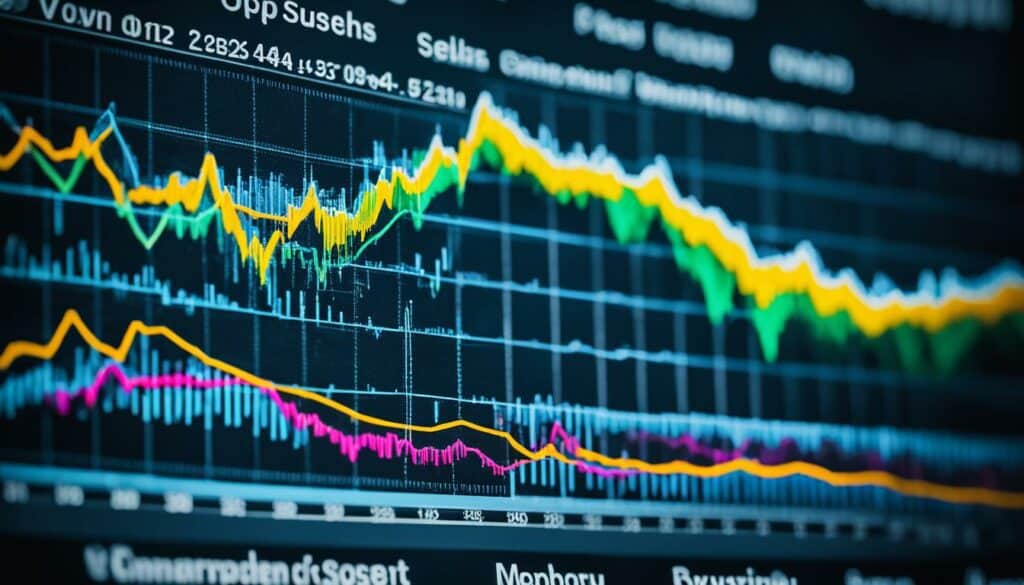
Take COMEX copper prices from January 2009 to February 2012. They showed a lot of up-and-down movement. This proves the need for always having updated commodity rates to make smart investment choices.
| Commodity | Open Interest Growth | Transaction Volume Trend (Year) |
|---|---|---|
| WTI Oil | Significant | Sharp increase since 2007 |
| Wheat | Significant | N/A |
| Copper | Significant | Sharp increase since 2009 |
There’s been a big jump in trading Commodity ETFs from 2009. This shows more people and groups see commodities as strong investments. For example, the WTI oil market has more than doubled its share of traders from 2000 to 2010.
The link between how different commodities perform has gotten stronger in recent years. This is a big change from the 1970s and 1980s. It points out how looking at commodity price analysis is crucial. It helps understand how different commodity prices move together.
After the 2008 financial crisis, many commodity prices started moving closely together. This was tough on traders who needed quick cash. It shows why using reliable and updated commodity rates in investment plans is vital.
Commodity trading has many legal and risk factors. Those involved need to really know these. The market is always changing, and it’s often volatile. This means you must manage risks well and follow the rules.
Investing in commodities means facing risks like economic cycles and political issues. Also, there are rules and the possibility of natural disasters. The past shows that commodities can be as volatile as stocks. This is why you should be very careful.
Using certain types of investments can make things even riskier.
For instance, the Bloomberg Commodity Index’s behaviour was unique up until 2015. It wasn’t closely linked to US stocks or global bonds. But, it did match the US Consumer Price Index. This shows how special commodities are and why you should stay informed when making decisions.
Commodity trading is heavily regulated to keep it fair and safe. The Commodity Futures Trading Commission (CFTC) watches over futures and other trades. Both the CFTC and the Securities and Exchange Commission (SEC) look at security futures. Traders need to be part of the National Futures Association (NFA) to ensure they meet standards.
Funds that follow commodity indexes, like ETPs and mutual funds, give you some legal cover. They also have to keep showing how they’re doing, making things clearer. Remember, putting money directly into commodities or futures isn’t as protected. So, you need to manage your risks really well.
| Commodity | Examples | Risk Factor |
|---|---|---|
| Agricultural | Wheat, Cattle | Market Conditions, Natural Disasters |
| Energy | Oil, Natural Gas | Economic Cycles, Political Factors |
| Metals | Gold, Silver, Aluminum | Regulations, Geopolitical Events |
Using up-to-date market info helps investors in the complex world of commodity trading. It ensures they follow the rules and lower their risks.
In today’s world, cookies are key to making the web better. They help with personalised market updates on price tracking sites. This means traders get a special experience as they look at different markets.
Cookies have different jobs, depending on what they do:
Using certain cookies brings big advantages, especially for things like tracking prices:
| Cookie Type | Function | Usage |
|---|---|---|
| Strictly Necessary | Basic operations & security | Essential for navigation |
| Functionality | User preference memory | Improves user experience |
| Performance | Data collection on usage | Enhances site performance |
| Targeting/Advertising | Tracks user activity | Delivers targeted ads |
The future of tracking commodity prices is changing with new tech. Artificial intelligence (AI) and machine learning (ML) are set to change how we look at the commodities market. They’re making it easier for investors to understand market changes.
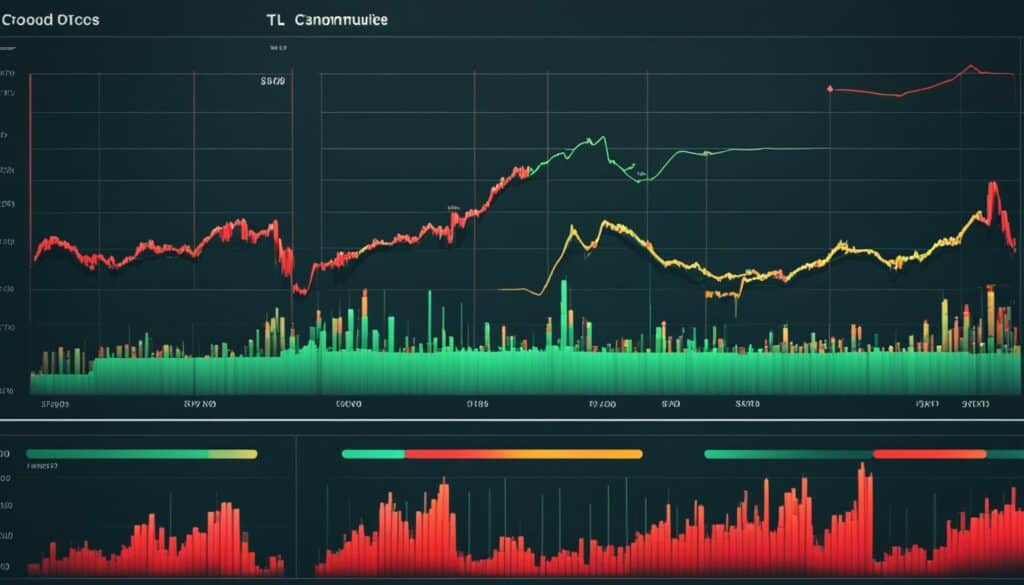
New technologies like AI and ML are leading the way in changing how we track prices. They allow traders to get real-time commodity prices. This improves how accurate their investment plans are. Predictive analytics can look at big sets of data to guess market changes better. This gives investors a view they couldn’t see before.
Looking forward, we can see where the market might go. For example, though prices only went up by 0.8% in 2023, use of new technology might steady these changes. Real-time commodity prices will mix into trading more. This makes investment strategies more flexible and quick to react.
| Year | Annual Change in Commodity Prices | Real-Time Commodity Prices Impact |
|---|---|---|
| 2021 | 12.1% | High volatility, limited technological support |
| 2022 | 4.8% | Moderate adoption of real-time tracking |
| 2023 | 0.8% | Increased usage of AI and ML, better predictions |
| 2024 (Est.) | 0.3% | Optimised commodity market updates, enhanced stability |
In the end, staying on top of market trends and getting real-time data is crucial. Technology is key for traders to react well to the market’s moves and make smart choices. As tech gets better, we’ll have more powerful tools to handle the market’s challenges.
Reflecting on real-time commodity prices, we see they are essential but tough in the financial world. The markets are always changing, demanding a dynamic mix of new tech, thorough data analysis, and understanding external forces.
This mix helps adjust investment strategies with the market. Online prices play a big role in this today.
The World Bank’s data shows commodity prices might drop by 4 percent in 2024. This follows a 24 percent fall in 2023. Energy, metals, and farm products prices show this trend too.
European natural gas prices dropped a lot in 2023 and might drop more in 2024. Yet, the need for minerals in making electric cars is going up. This includes cobalt and lithium.
Looking back to 1993, we learned prices can change fast because of short events in the economy. Different indexes give us clues but can make things complex. Still, real-time data is key for understanding the economy. It helps investors make smart choices when the market is unsure.
In the end, keeping up with commodity prices is all about learning and changing. As we use better tools, our strategies will get better too. Staying on top of market news gives traders the wisdom they need. This wisdom is crucial for making strong and profitable decisions.
Knowing current commodity prices helps you make smarter choices. Prices often change quickly due to many factors. It’s crucial to have the latest, accurate details.
Precious metals, food, fuels, and metals are examples of commodities we track live. They all have different ways of moving in their markets. So, they need special attention.
Producers, buyers, contracts, and trading places are crucial. These all connect in a way that tells us what’s happening in the market right now.
Dealing with trusted market makers and data providers is best for getting correct prices. It’s also wise to check data from several good sources for confirmation.
New finance tech helps traders keep up with live market data. It sends updates, files, and alerts quickly, helping them to react fast to changes.
Getting instant market news helps traders and investors. They can act fast, which is key to making the most out of good trends and avoiding losses.
The speed at which prices can change is a big issue. Keeping up to protect your investments and finances takes both careful planning and quick thinking.
Look for tools that let you look into historical trends and use predictions. Also, find ones that you can customise to understand the data better.
Big events in finance, rules, and politics can change prices a lot. Staying updated is the best way to manage these changes.
The best services offer reports and alerts tailored to what you need. They respond quickly to price movements, helping you stay in the know.
Using up-to-date prices can make your investments better and safer. By studying this data well, you can create a plan that reacts well to changes.
Knowing the market’s risks and following the rules are key to keeping your money safe. This way, you make smart choices that are in line with the market.
Cookies help give you the updates you need. They keep the websites working well and give you a better time browsing. This way, you get to see and understand what’s happening with prices.
Next-step tech like AI and learning machines will change the way we follow prices. They offer tools that make seeing and predicting trends easier and more accurate.